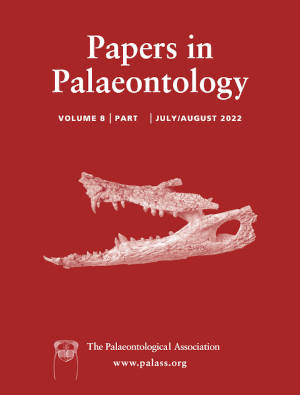Article: Evidence of large terrestrial seymouriamorphs in the lowermost Permian of the Czech Republic
Publication: Papers in Palaeontology
Volume:
8
Part:
2
Publication Date:
2022
Article number:
e1428
Author(s):
Gabriela Calábková, Jakub Březina, and Daniel Madzia
DOI:
10.1002/spp2.1428
Abstract
Abstract Lower Permian strata of the Boskovice Basin in the Czech Republic have yielded hundreds of largely complete seymouriamorph individuals, some of which are exceptionally preserved and have noticeable soft tissues, such as external gills and eye structures. The vast majority of these finds are referable to Discosauriscus austriacus, and almost exclusively represent larvae and juveniles tied to aquatic environments. Only one of the specimens discovered to date has been interpreted as an early adult, although late juvenile and early sub-adult stages have been proposed for it as well. Regardless, no other seymouriamorph adults have been reported from the Boskovice Basin so far. Here we present the first comprehensive assessment of seymouriamorph tracks and a trackway from the Asselian (lowermost Permian) of the Boskovice Basin. The morphology of the tracks is congruent with that of the ichnotaxon Amphisauropus and indicates an attribution to Discosauriscidae or that they belong to as yet unrecognized large seymouriamorphs. All tracks were made by individuals much larger than the largest discosauriscid known from bodily preserved material and are interpreted as those of adults tied to terrestrial environments, thus apparently documenting a habitat shift that occurred relatively late in the ontogenetic development of these seymouriamorphs. Furthermore, the largest track is preserved in extraordinary detail and includes soft part impressions such as digital, palmar and plantar flexion creases, making the specimen one of the best preserved seymouriamorph tracks described to date. Finally, one of the tracks originates from the lowermost Asselian and is therefore among the oldest known records of seymouriamorphs worldwide.
